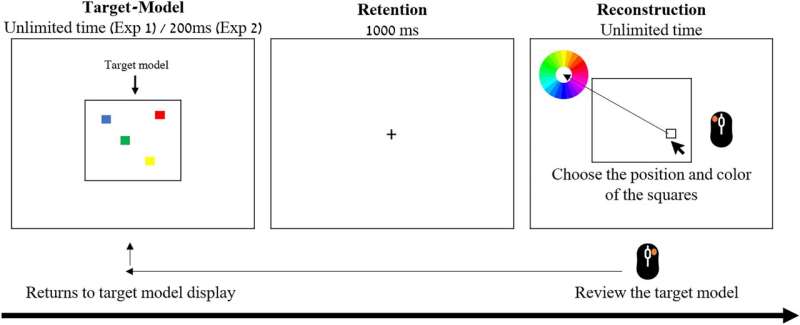This article has been reviewed according to Science X's editorial process and policies. Editors have highlighted the following attributes while ensuring the content's credibility:
fact-checked
peer-reviewed publication
trusted source
proofread
Study indicates people underuse their visual working memory

People tend to underutilize their visual working memory (VWM) rather than maxing out its capabilities, according to a new study by Ben-Gurion University researchers.
The research was published in Scientific Reports in April.
Visual working memory (VWM) is the ability to keep visual information in mind for a few seconds. It is incredibly important for everyday behavior, but its capacity is strictly limited. Experiments assessing this capacity typically present people with an array of visual items and ask them to remember them for a future memory test. On average, people can only remember around 3–4 items.
A new study by Dr. Yoav Kessler and his student Shalva Kvitelashvili revealed that this number is actually much lower, often just a single item, in cases where people can decide how many items to remember. These findings shed new light on how VWM is used in real-life situations.
"The use of VWM has been understudied mainly because it has been hard to assess. In addition to our surprising findings about VWM, our experiments open an avenue towards much more research into this fascinating daily occurrence," says Prof. Kessler. He and Shalva are both members of the Department of Psychology and the School of Brain Sciences and Cognition.
In the study, they introduced a new paradigm called the "model-reconstruction" task.
"In this task, participants are tasked with recreating a 'target-model' comprised of a randomized arrangement of colored squares. Initially, the model is presented to participants, after which they proceed to the reconstruction phase. During this phase, they are provided with an empty black frame.
"To recreate the model, participants used the computer mouse to indicate the position and color of each square. Critically, participants can freely review the model by pressing a button and alternate between the model and the reconstruction screen as they wish. By tracking the number of item positions after each review of the model, we can estimate the utilization of VWM capacity in each step.
"In addition to our new tasks, the participants were evaluated with a visual change detection task to enable us to examine the correlation between VWM capacity, as measured in standard tasks, and VWM utilization and accuracy in our model reconstruction task," the two write.
In two experiments, the researchers found that rather than exploiting their full capacity, participants underutilized their VWM. In most cases, they chose to maintain only one item at a time, despite their ability to remember more items. Further studies should examine why people do so, and how this decision affects performance in real-life tasks.
More information: Shalva Kvitelashvili et al, The voluntary utilization of visual working memory, Scientific Reports (2024). DOI: 10.1038/s41598-024-58685-5



















